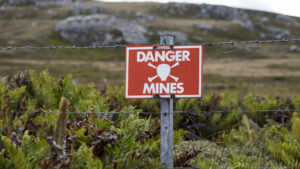Micro-X wants to use mini x-ray machines to sniff out mobile phone bombs

Pic: Yuichiro Chino / Moment via Getty Images
Ultra lightweight x-ray machines may soon be trialled for use in airports to detect explosives hidden in phones and other personal electronic devices.
Micro-X (ASX:MX1) today announced a research and development contract with the UK Ministry of Defence to kick off the first phase of work to make it a reality.
Under the contract, Micro-X will develop and test a lightweight version of its military xray “Backscatter” system using a combination of techniques to provide unique high-resolution images of devices that might be carried on board passenger aircraft.
Shares in the company were trading up 3 per cent in early trade – at 36c.
Micro-X last month raised $5 million to further develop the product as well as a medical variation called DRX Revolution Nano.
Micro-X reported $570,000 in sales for the December half but spent $9.4 million leaving $4.1 million in the kitty before the latest capital raising.

The new $50 million R&D deal was awarded to Micro-X as part of a tender with a British defence technology accelerator. The first phase is worth $132,000 over six months.
MX1 has provided indicatives costs for a second phase which would ready the technology for a future airport trial system.
“This project uniquely combines the technical successes we have had both in our lightweight medical projection imaging system and our Backscatter Imager which we demonstrated to the Australian Defence Force’s Counter-IED Task Force last year,” managing director Peter Rowland said.
“We conducted some imaging tests before submitting our bid for this project and were very pleased at the tiny amounts of explosive material which were easily detectable using this Backscatter imaging technique.”
Micro-X’s mobile system developed for the Australian Department of Defence.The back-scatter imager uses multiple x-ray beams generated by carbon nanotube emitters to remotely acquire and transmit images of a potential threat.
Its trial with the Australian Defence department had the system mounted to a robot vehicle — but it would likely take a different form for its airport application.
The South Australian company is also developing mobile medical x-ray imager for hospitals and a second version for military use.
UNLOCK INSIGHTS
Discover the untold stories of emerging ASX stocks.
Daily news and expert analysis, it's free to subscribe.
By proceeding, you confirm you understand that we handle personal information in accordance with our Privacy Policy.








